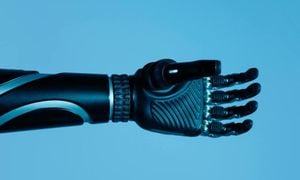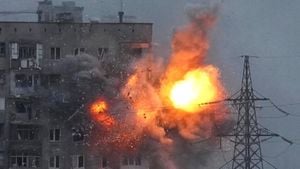NASA astronauts Sunita Williams and Butch Wilmore have recently found themselves at the center of attention, not for their accomplishments but for delays surrounding their expected return from the International Space Station (ISS). Initially launched on June 5, 2024, aboard Boeing's Starliner spacecraft, the mission intended for only a week-long stay at the ISS has turned unexpected as technical issues have caused their return to be postponed until February 2025.
The dramatic delay stemmed from the discovery of malfunctions shortly after the crewed spacecraft successfully docked at the ISS. Out of the Starliner's 28 thrusters, five were found to be non-operational once Williams and Wilmore arrived at the station. These technical glitches resulted in NASA's decision to return the spacecraft uncrewed, meaning both astronauts would have to stay at the ISS for much longer than initially planned.
NASA has planned for them to return via SpaceX's Crew Dragon spacecraft, indicating their transition from one private spacecraft manufacturer back to another, highlighting the complicated relationship between Boeing and NASA’s long-term goals of private commercial space travel.
Following their unexpected extended mission, both astronauts are maintaining their spirits and will host updates for the public on September 13, marking the first time they will interact since the Starliner's uncrewed return. The conference will be streamed live on various platforms, including NASA's official channels. Confirming their resilience, Williams stated, "We are having a great time here on the ISS," clearly trying to keep the mood optimistic amid the chaos of their situation.
While the situation might sound alarming, experts have weighed in with reassurances. John Horack, the Neil Armstrong Chair in Aerospace Technology at The Ohio State University, commented, “Test flights are never perfect and if they are, you should ask yourself what wasn’t found.” He acknowledged the crew's extended stay as part of the learning opportunity, emphasizing the safety protocols ingrained from historical incidents like the Challenger and Columbia disasters, which have severely shaped NASA’s approach to space travel.
Despite initial concerns and terminology around the astronauts being 'stranded' on the ISS, officials clarified there has never been more crew members onboard than seats available for return missions. The station currently has additional crafts docked, ready for immediate evacuation if necessary, so Williams and Wilmore were never truly left without escape options. NASA has protocols for emergencies to alleviate fears of being without means to return home.
While on the ISS, the astronauts are not just floating around; they continue to contribute significantly to scientific research and experiments. With sufficient tasks and two more crew members joining them soon, Williams and Wilmore are expected to not only keep busy but also enjoy the invigorated camaraderie from their peers. Supplies routinely flow to the ISS without the presence of human space flights, ensuring their living conditions remain stable.
The mission’s complications also reflect broader challenges faced by Boeing, which has faced heavy scrutiny following its 737 Max tragedies. This setback is only another bump on Boeing's bumpy road to delivering reliable spacecraft for transporting astronauts. During the flawed Starliner test mission, issues with the thrusters have raised questions about the reliability of Boeing's space vehicles, which NASA had hoped could eventually reduce reliance on Russian spacecraft for getting astronauts to the ISS.
State-of-the-art safety measures, including continuous training for emergencies, have prepared the crew for various scenarios, ensuring they remain vigilant and ready to adapt to unexpected situations. Lessons learned from the past continue to influence NASA's current training and technology improvements to maintain the safest possible environment for its astronauts.
Navigational challenges encountered by the astronauts during their stay could also yield invaluable insights for future deep-space missions, as their commitment to scientific inquiry and discovery continues unabated. Discussions during the upcoming conference are likely to cover not only their experiences aboard the ISS but also highlight the multitude of experiments and projects they’ve been working on.
Though their expected return has been delayed, the careful planning and quick response by NASA, with backup plans firmly set, assure the safety of the crew and reshape this dilemma as just another chapter of NASA’s continuous exploration legacy. With Williams and Wilmore due back next February aboard SpaceX’s Crew Dragon, the duo remains resilient and focused on their work, all part of their historic contributions to human spaceflight.



